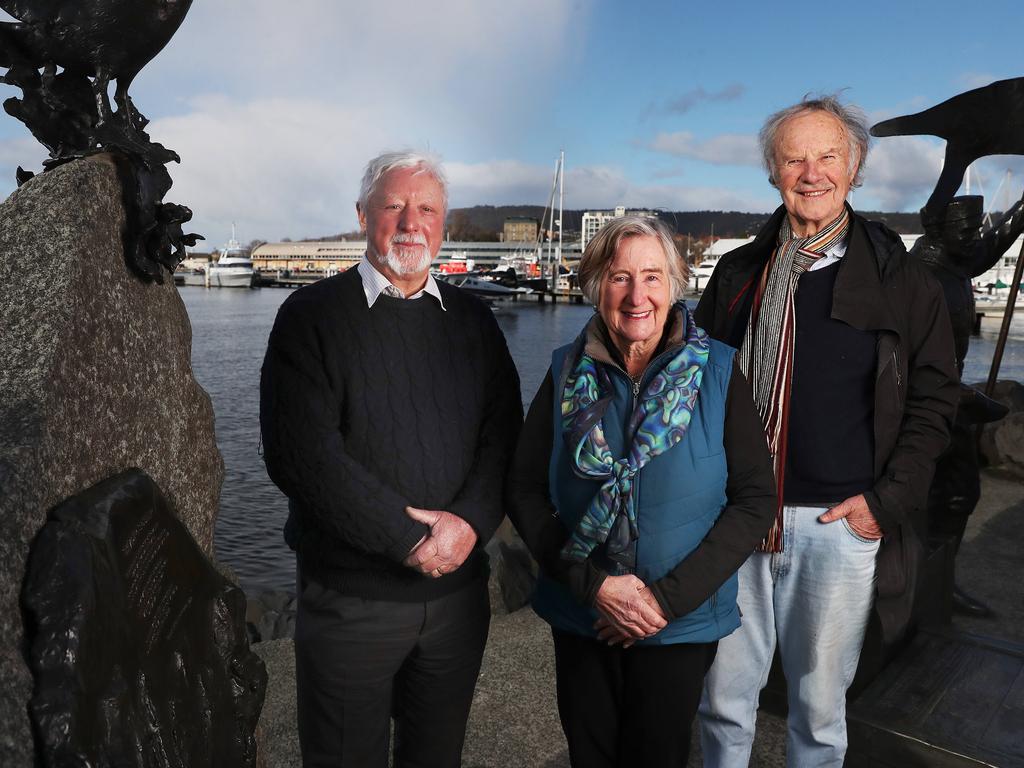Pioneering Antarctic expeditioners reflect on what drew them to the frozen continent, what they learnt
As Australia’s Antarctic program prepares to mark a significant milestone, three former expeditioners have reflected on their epic – and sometimes dangerous – voyages to the frozen continent.

IN the summer of 1981, Suzanne Stallman was the sole woman in a 70-strong research team stationed at an Antarctic outpost.
One would have forgiven her for feeling intimidated.
“When I think back, it should have worried me, but it didn’t, really,” the retired geographic officer says today of her stint at Mawson Station.
“It’s just what I did.
“At first it was a little bit daunting because some of the burly … construction workers, I think they thought, ‘Who’s she?’ But I think they soon realised that I was just fair and quite well-organised, if I might say so.”

Now 70, Ms Stallman began working at the Australian Antarctic Division (AAD) in 1978, when it was still headquartered in Melbourne.
“I was supposed to go down that first summer to do the hydrographic work,” she said. “But because I was the only woman they wouldn’t let me go because of facilities, et cetera. But in the second year, there was a [female] biologist and a photographer so the three of us could share a cabin.”
It’s believed Ms Stallman, who served as voyage leader on a number of expeditions, was the first woman to visit all the Australian research stations on the Antarctic continent – Mawson, Casey, and Davis – as well as Macquarie Island and Heard Island in the sub-Antarctic.
It was 75 years ago this month that the Australian National Antarctic Research Expedition was established, subsequently embarking on its first post-war research mission to Heard Island, which kickstarted decades of fruitful exploration.
Ms Stallman now runs a farm, located between Coningham and Kettering, with her husband, Martin Betts, who she met at the AAD.

As the publications officer for the division, Mr Betts was responsible for boosting its public profile and promoting expeditions. In 1986, he was appointed as the ANARE co-ordinator, tasked with planning the scientific program and shipping schedules.
Mr Betts, 76, said he had been on close to 40 expeditions to Antarctica since the late 1960s, serving as voyage leader on 12 and deputy leader on five.
“I got paid for 40 years to have fun,” he said. “And I’m deeply privileged to have been involved with the program. It’s just a wonderful experience.”

“I’m not saying it was easy all the time. It wasn’t. But it was very fulfilling and enjoyable in so many ways.”
The couple had one son, Stewart, who they raised as they each continued to venture south.
“I’d be doing a voyage and I’d come back and [Suzanne] would hand me our son and go to Antarctica herself,” Mr Betts laughed.
“We had a life together, really, as Antarctica brought us together.”
Nearly two decades before Mr Betts and Ms Stallman first met, a 22-year-old budding scientist named George Cresswell embarked on his own epic journey to Antarctica to observe and study the southern lights, or aurora australis.

“It was a bloody great adventure,” he said of the 1960 expedition, during which a party of 33 spent 15 months at Mawson Station.
“Things were pretty basic back then. We heated the huts with coal briquettes and communication back to Australia was with Morse code so we had radio staff to do that. We were only allowed 40 words per month that we could send back to Australia.
“We had to work all night and sleep during the day. And sometimes, when the days get very short, it meant you worked quite long hours. But then you just gave it up because you were so tired. You had to sleep.”
Mr Cresswell, 84, now living at Prince of Wales Bay, would go on to become an oceanographer with the CSIRO – but not before he got up to some mischief on his formative trip south.
“When I was about to go [to Antarctica] I rode my motorbike to the docks in Melbourne to the ship, the Thala Dan, a Danish ship,” he said. “And I said to the coxswain, ‘Can I take it down to Antarctica?’ And he said, ‘Yeah, just drain the petrol out of it and we’ll put it on-board’.”

Once he’d landed on the continent, it wasn’t long before Mr Cresswell began darting across the sea ice on his 350cc Velocette.
“There was enough crustiness on the sea ice – unless it had just frozen in places – so you had a bit of a grip,” he said.
“But towards the end of winter, the ice gets very thin. And you’re still riding around and you come very close to grief. The ice actually bends a little bit and you realise that you’re in a dangerous place.”
But Mr Cresswell has no regrets about his rebellious escapades.
“We did it for fun,” he said.
More Coverage
Originally published as Pioneering Antarctic expeditioners reflect on what drew them to the frozen continent, what they learnt









